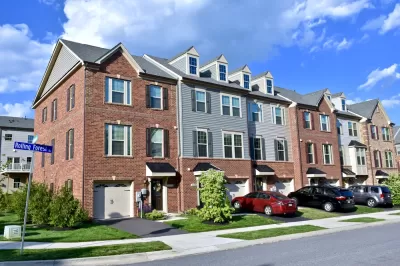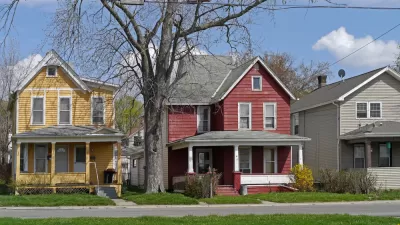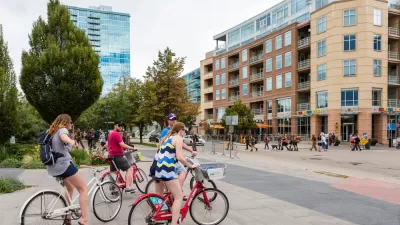In Arlington, restricting density to preserve neighborhood character isn't new. A rowhouse ban in 1938 may be one factor behind today's steep prices and gentrification.

David Whitehead covers the long-standing problem of "missing middle" housing in Arlington, Virginia. In the 1930s, during a boom period, developers were keen to replace older bungalows with rowhouses. "That didn't sit well with community leaders at the time, who hoped to preserve Arlington's then-suburban character. Rowhouses, they believed, would 'mar the suburban landscape.' And so, in 1938, the county changed its zoning to prohibit rowhouses."
Today, Whitehead argues, the Washington D.C. region faces a similar problem, but one that's been exacerbated by the previous century's failure to build infill housing. "According to its place in our metropolitan hierarchy, Arlington should have a lot of rowhouses. But it doesn't, because 79 years ago preserving a community character that was unpreservable anyway was a higher priority than building enough housing during an ongoing boom."
FULL STORY: Arlington banned rowhouses in 1938. We’re suffering the consequences now.

Alabama: Trump Terminates Settlements for Black Communities Harmed By Raw Sewage
Trump deemed the landmark civil rights agreement “illegal DEI and environmental justice policy.”

Study: Maui’s Plan to Convert Vacation Rentals to Long-Term Housing Could Cause Nearly $1 Billion Economic Loss
The plan would reduce visitor accommodation by 25% resulting in 1,900 jobs lost.

Why Should We Subsidize Public Transportation?
Many public transit agencies face financial stress due to rising costs, declining fare revenue, and declining subsidies. Transit advocates must provide a strong business case for increasing public transit funding.

Paris Bike Boom Leads to Steep Drop in Air Pollution
The French city’s air quality has improved dramatically in the past 20 years, coinciding with a growth in cycling.

Why Housing Costs More to Build in California Than in Texas
Hard costs like labor and materials combined with ‘soft’ costs such as permitting make building in the San Francisco Bay Area almost three times as costly as in Texas cities.

San Diego County Sees a Rise in Urban Coyotes
San Diego County experiences a rise in urban coyotes, as sightings become prevalent throughout its urban neighbourhoods and surrounding areas.
Urban Design for Planners 1: Software Tools
This six-course series explores essential urban design concepts using open source software and equips planners with the tools they need to participate fully in the urban design process.
Planning for Universal Design
Learn the tools for implementing Universal Design in planning regulations.
Smith Gee Studio
Alamo Area Metropolitan Planning Organization
City of Santa Clarita
Institute for Housing and Urban Development Studies (IHS)
City of Grandview
Harvard GSD Executive Education
Toledo-Lucas County Plan Commissions
Salt Lake City
NYU Wagner Graduate School of Public Service





























